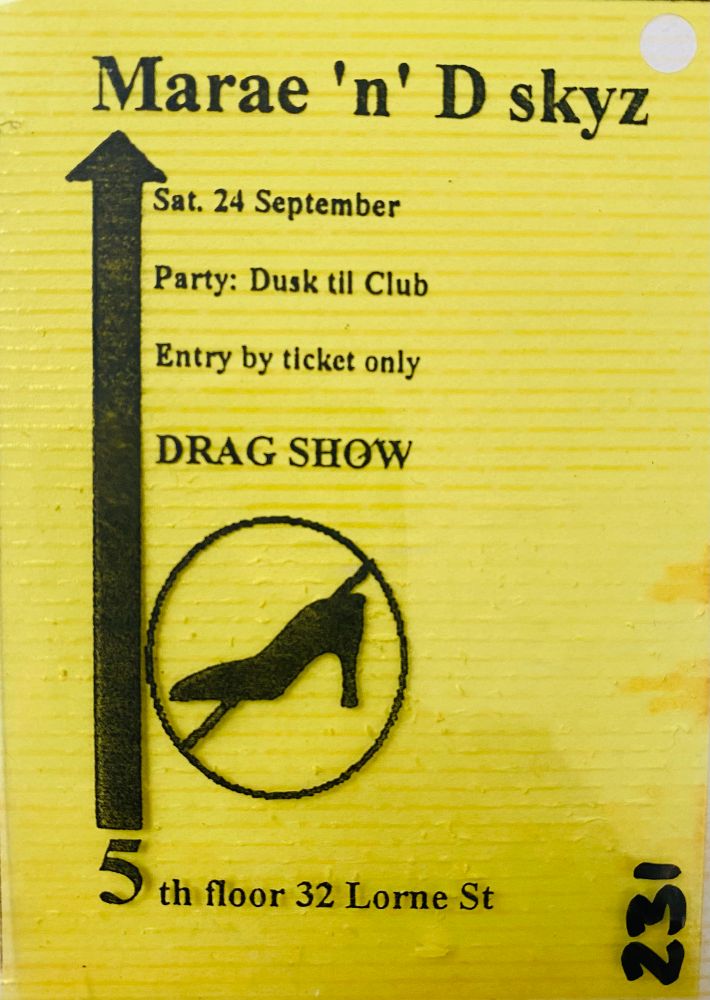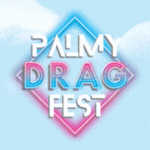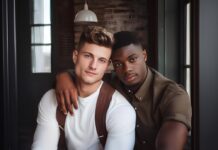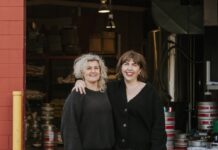Michael Gullery tells Steven Oates how a downtown apartment became a hub for social/political change and a multi-generational queer commune in 90s Auckland.
Khartoum Place is a small tranquil square connecting Lorne and Kitchener Streets. Although best known for its memorial and waterfall dedicated to New Zealand’s Women’s Suffrage movement, throughout the early 1990s the area was possibly better known to many Queers for the imposing building next door that looked over the square. The top floor of Newland House was for the first half of the 90s widely known as the ‘Marae in the Sky’.
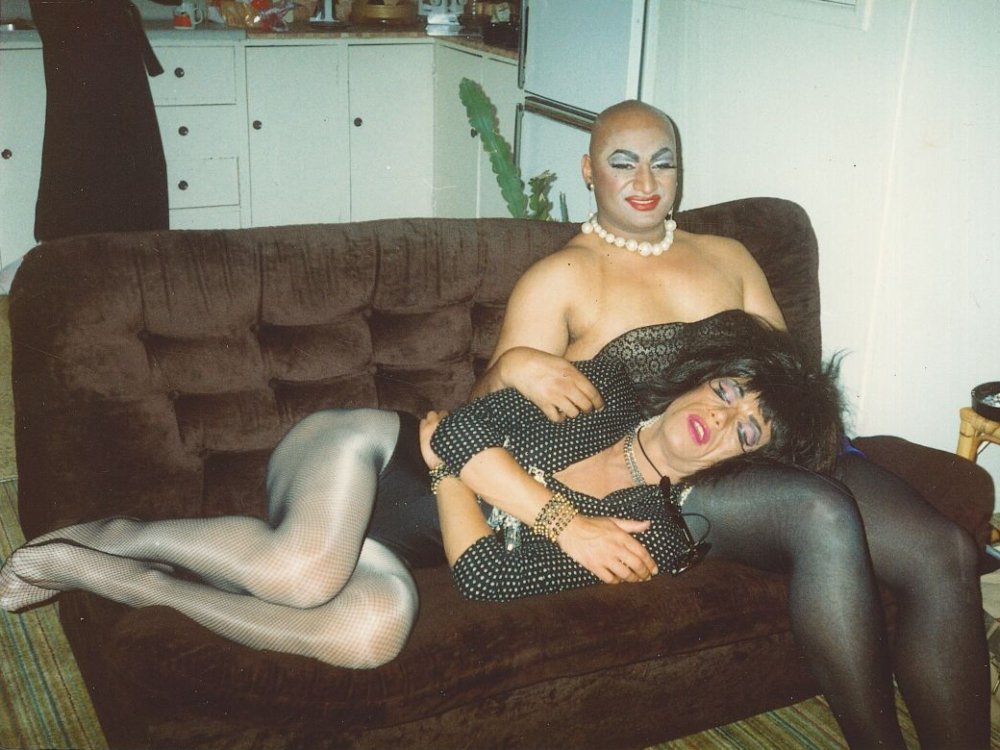 “We rented the whole top floor. It was this really swanky New York loft apartment, with polished floors and five bedrooms, eight of us were on the rent roster. So there was hot bedding and mattresses on the floor for visitors. The space very easily lent itself to being like a Marae, a Wharenui,” says Michael Gullery, one of the residents.
“We rented the whole top floor. It was this really swanky New York loft apartment, with polished floors and five bedrooms, eight of us were on the rent roster. So there was hot bedding and mattresses on the floor for visitors. The space very easily lent itself to being like a Marae, a Wharenui,” says Michael Gullery, one of the residents.
The notoriety of Marae in the Sky is probably due to the collection of residents most of whom were considered movers and shakers in their own fields of expertise. Hone Edwards was high up in Maori Programming at TVNZ, Harold Samu worked at the Department of Social Welfare (as a freelance facilitator) as well as performing as Bertha at The Staircase Nightclub, Hina London coached and ran an indoor netball centre, Bossy Mana also at the Department of Social Welfare and Witoria Drak who was the legendary drag queen, Pussy Galore! Having so many dynamic individuals residing under one roof established a perfect storm of creativity and influence within the Auckland Queer scene.
Original tenants: Hone, Witoria, Hina, Bossy, Harold, Henare Rawiri (Zsa Zsa), Vaiili Faapuea (Lee) and Michael, each brought something unique to the table.
 Many of the whanau had been friends for years, but one of their strong unifying factors was sport.
Many of the whanau had been friends for years, but one of their strong unifying factors was sport.
“The other glue that kind of cemented us together was Netball. Because pretty much everybody in the house except me played Netball and they were pretty good at it. So they played in the Auckland men’s Netball Association, but there were too many good players and there was only one room for one A Grade team so Witoria and our boys at Lorne Street broke away and we created the North Harbor Municipal Association. So there were charity tournaments all winter. We’d raise money for various Marae and schools. We’d host tournaments, and teams would come from all around the country, we’d put them all up at Lorne Street.”
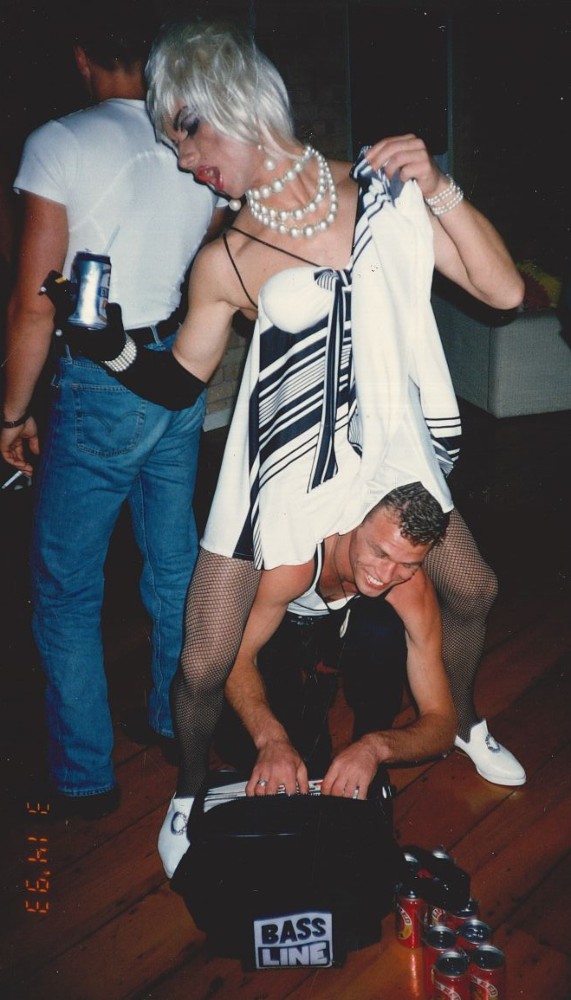 Although affectionately known as the Marae in the Sky, Maori protocol in the house was strictly adhered to and Witoria Drake ensured that tikanga was followed.
Although affectionately known as the Marae in the Sky, Maori protocol in the house was strictly adhered to and Witoria Drake ensured that tikanga was followed.
“Witoria was absolutely the matriarch, she ran all the bills and the rules were set by her. The Tikanga of the house was Maori so it operated like a Marae. Everybody had their own jobs you only had to worry about your job, and could never criticize anybody else. You just got on with yours. The whole thing went really smoothly. We had meals every day. There was a cooked meal on the table every night. Food was left there for lunch and breakfast. Plus, it was Queer. Whatever Queers do is going to be a bit different.”
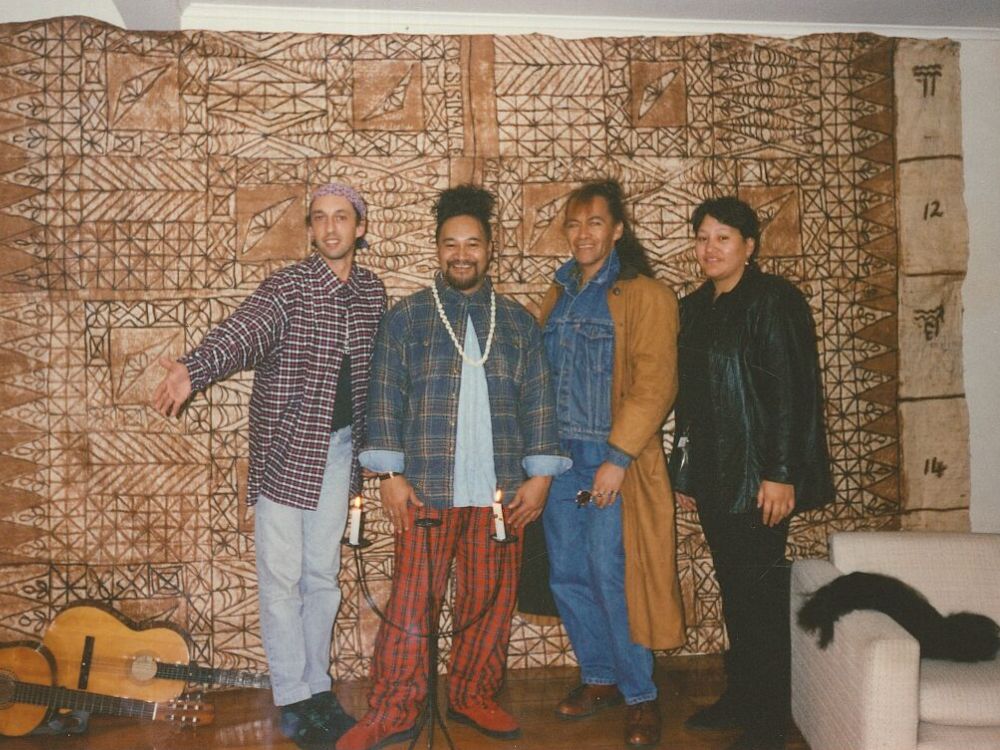 Eight people may have been paying the rent but the Marae in the Sky quickly gained a reputation as somewhat of an informal community centre for those in need.
Eight people may have been paying the rent but the Marae in the Sky quickly gained a reputation as somewhat of an informal community centre for those in need.
“There seemed to be a lot of people that were sick with HIV and they lost their houses or got kicked out from the families or just got stuck between places to live. Lorne street became a refuge for those people. So we kind of worked off manaakitanga where we were looking after people…. street kids, all sorts of people came through those doors, and they all got the same treatment, it didn’t matter. Family would come and stay. Old people too, all kinds of people would come and hang out at Lorne Street.”
 The Lorne Street hospitality became so widely known that even those in power became frequent visitors… “Koro Wētere who was the Minister of Maori Affairs was a frequent visitor. He enjoyed our company and slept at our house. We loved it when Hone’s relations came to. They used to come on mass with boxes of seafood and stay for the week or a weekend. We were all involved in our own politics too like we were all involved in not only gay political things, we were anti-nuclear, we were all in the middle of all of the organizations that were trying to make the world a better place, we had a role to play in lots of things, everybody was busy. Plus, we partied pretty well. So we knew a lot of people.”
The Lorne Street hospitality became so widely known that even those in power became frequent visitors… “Koro Wētere who was the Minister of Maori Affairs was a frequent visitor. He enjoyed our company and slept at our house. We loved it when Hone’s relations came to. They used to come on mass with boxes of seafood and stay for the week or a weekend. We were all involved in our own politics too like we were all involved in not only gay political things, we were anti-nuclear, we were all in the middle of all of the organizations that were trying to make the world a better place, we had a role to play in lots of things, everybody was busy. Plus, we partied pretty well. So we knew a lot of people.”
All of this helped cement Lorne Street as a hub for political activism for both Queer and Straight issues. Particularly around Maori policy regarding the revival of Te Reo.
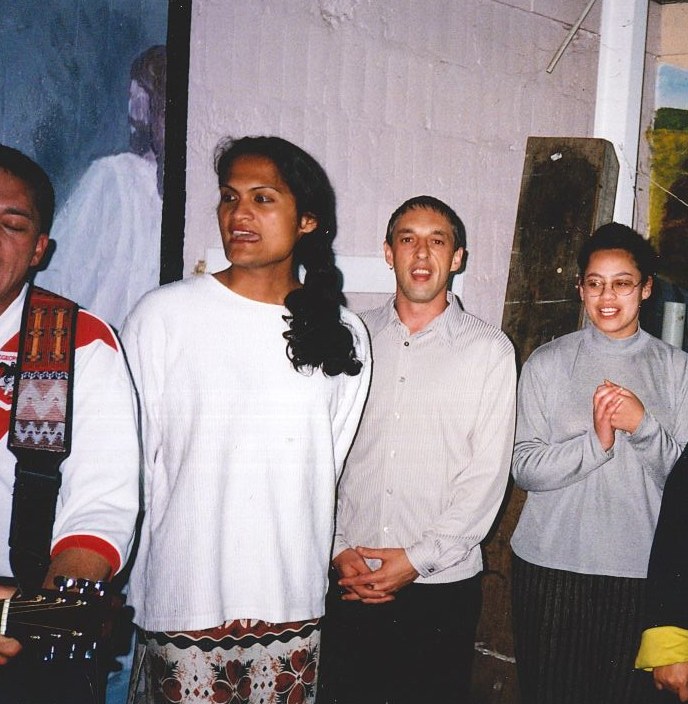 “There were lots of Maori initiatives to do with the rebuilding of the language that was coincidental to our time at Lorne Street. There were people [pivitol in Te Reo’s revival] that met with each other around the table at Lorne Street. More for convenience. It was a private place to meet. It was a Maori place. So lots of informal contacts could be created very easily around the table at Lorne Street.
“There were lots of Maori initiatives to do with the rebuilding of the language that was coincidental to our time at Lorne Street. There were people [pivitol in Te Reo’s revival] that met with each other around the table at Lorne Street. More for convenience. It was a private place to meet. It was a Maori place. So lots of informal contacts could be created very easily around the table at Lorne Street.
All good things must come to an end. As some of the residents became unwell with HIV-related issues, the energies and focus of the house changed. By 1996 many of the original residents had either passed away or moved on leading to the end of the infamous Marae in the Sky.
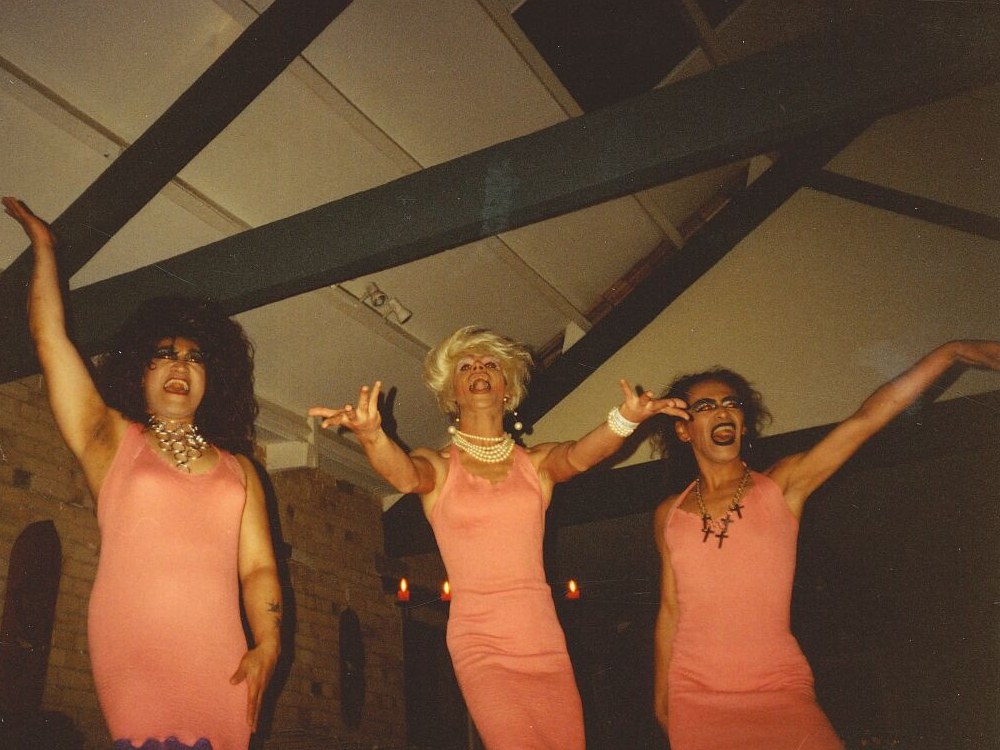 Michael believes the kaupapa continues today, particularly in South Auckland’s vogue scene.
Michael believes the kaupapa continues today, particularly in South Auckland’s vogue scene.
“A lot of the houses that are around now, function in the same way. There’s often a visible matriarch. They live together and work together. FAFSWAG, Coven, House of Iman, for example, when I watch them work, they do what we did.”
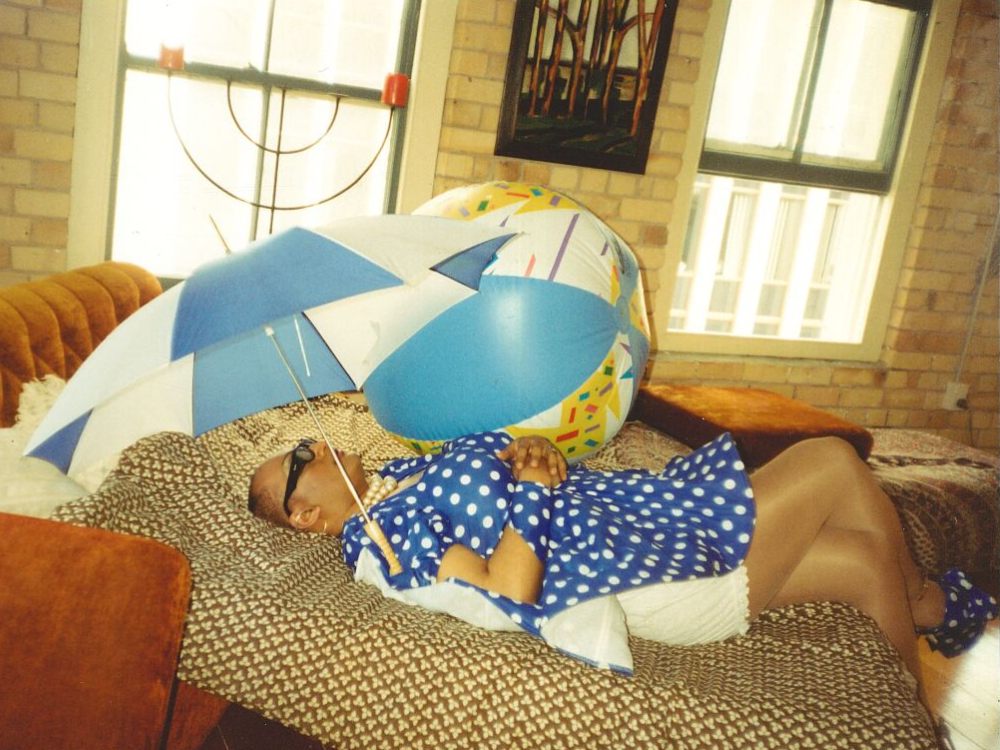 As many of us Queers get older and face futures without children, could Marae in the Sky style of living, suit us? Should we all be looking to Maori Tikanga for guidance on how to adapt to more communal lifestyles where we may have to accept that we need each other more?
As many of us Queers get older and face futures without children, could Marae in the Sky style of living, suit us? Should we all be looking to Maori Tikanga for guidance on how to adapt to more communal lifestyles where we may have to accept that we need each other more?
“Maori and Pacific cultures generally behave in a very caring way in a group. It’s a dynamic of life, that’s very natural, they don’t operate any other way, really. It’s a good model for gay people. The roles actually work. There’s a similarity between you all if you can find that commonality. Something that makes you all equal in a group, then bingo, you’ve got your Marae In The Sky.”
